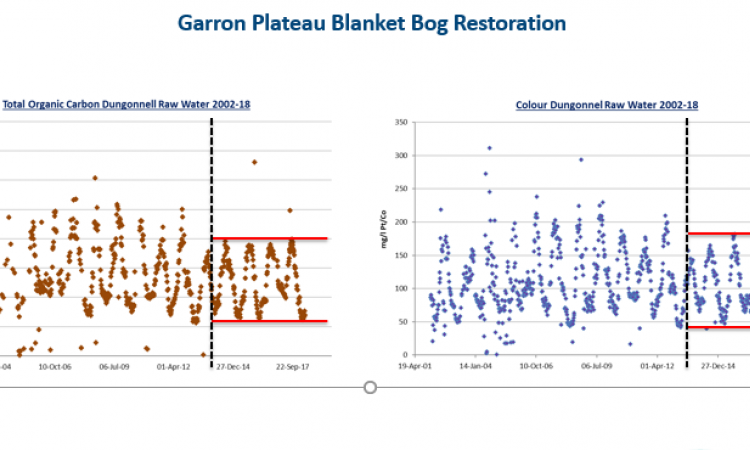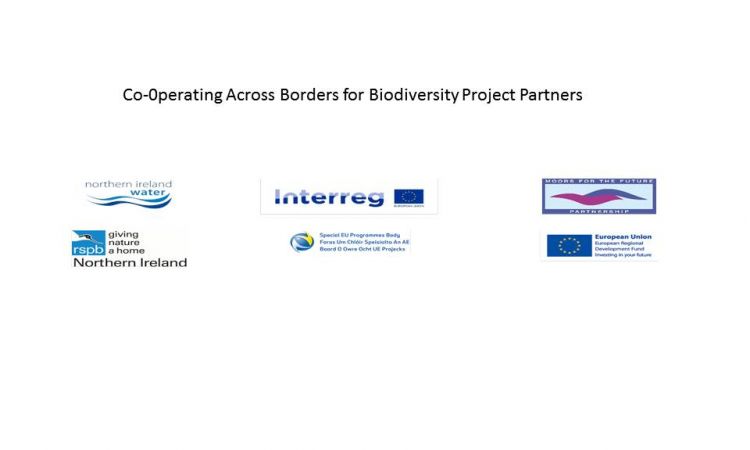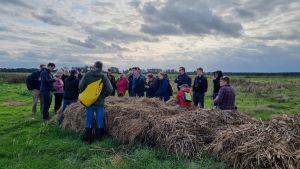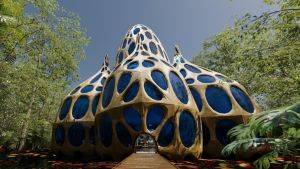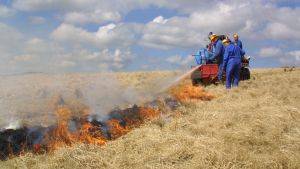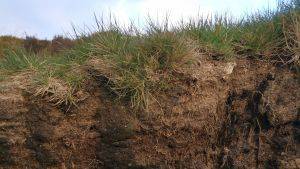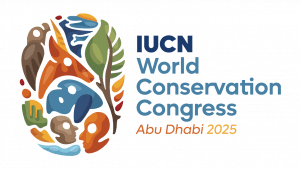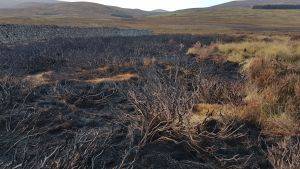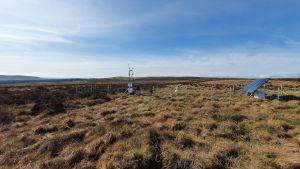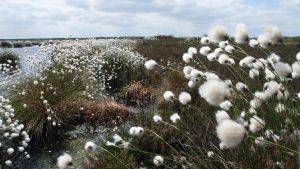Dungonnell Blanket Bog Catchment Management Plan
Introduction
The Garron Plateau (latitude 55.003, longitude -6.061) contains the most extensive area of intact blanket bog in Northern Ireland, with an area of over 4,650 ha and holds approximately 5.9x106 tonnes of carbon. Peat depth is variable, with an average of 0.5-3 m being fairly typical. However, where peat has accumulated in depressions, depths in excess of 5 m are not unusual. The peatland complex acts as the catchment to Dungonnell Reservoir, which is owned by Northern Ireland Water and provides drinking water to the populations within the Ballymena and Moyle district council areas. In total, Dungonnell Reservoir and it’s catchment on the Garron Plateau supply clean drinking water to approximately 37,000 homes.
Description
The Garron Plateau peatland is a designated Area of Special Scientific Interest (ASSI), Special Area of conservation (SAC), Special Protection Area (SPA) and a Ramsar site. The site was designated for protection as it contains several Annex I and Annex II priority habitats, such as a number of oligotrophic lakes and alkaline fens. In addition, the site contains the only Northern Ireland populations of the Annex II species marsh saxifrage and bog orchid and is a protected area for Hen Harrier and Merlin.
Problems associated with the blanket bog catchment at Dungonnell.
Overgrazing and lack of Sphagnum moss are the reasons for the unfavourable status of the blanket bog habitat. Sphagnum is a key peat-building moss that relies upon wet conditions. However, the moor has been artificially drained by means of a system of drains. Therefore, in addition to livestock management, restoration efforts must address bog hydrology in order for the Sphagnum to recover.
Project Aims
Active restoration works involve:
- blocking artificial drains in order to re-establish a high water table and re-wet the bog (dams constructed mostly from in situ peat with plastic and timber also used); and
- managing grazing levels and stocking density to ensure they are maintained at a suitable level.
To date 15 km of drains have been blocked to restore 72 ha of blanket bog. Work is ongoing to restore an additional 444 ha and 41 km of artificial drainage channels at the site, with an estimated completion date in 2021.
2017 – Phase 2 – Interreg funded project for restoration of the entire catchment at Dungonnell
In 2017, the Special EU Programmes Body (SEUPB) announced a new and innovative environmental project designed to recover natural habitats and protect vulnerable species, on a cross-border basis. As part of the project, further work to restore Dungonnell blanket bog catchment was granted funding through the INTERREG VA programme to continue and build upon the work started in 2012.
The project, Co-operation across Borders for Biodiversity (CABB), is being managed by RSPB Northern Ireland, and has brought together a number of environmental groups, agencies and charities from Northern Ireland, the Border Region of Ireland and western Scotland to address common concerns about important habitats in these areas. The CABB project aims to identify important habitats under threat and to develop Conservation Action Plans (CAPs) to restore the quality of the habitat. One of the main areas identified under this project was the Garron Plateau blanket bog site in Northern Ireland.
Under the CABB project, a further 38 km of drains have been identified at the site and these will be blocked with 3200 dams to restore the entire Dungonnell Catchment within the Garron Plateau ASSI. The work is being carried out by NI Water in partnership with the Royal Society for the Protection of Birds in Northern Ireland (RSPB NI), Northern Ireland Environment Agency (NIEA) and Moors for the Future Partnership (MFFP).
Raw water at Dungonnell Reservoir is routinely monitored by NI Water for parameters including Turbidity, colour and Total Organic Carbon. Additional work being undertaken by Queen’s University Belfast to monitor the restoration works includes:
- monitoring the water table before and after restoration and comparison with a control location
- assessing the flow of water within the catchment using stable isotope analysis (O and H)
- determine changes in colour and dissolved organic carbon content of streams within the catchment
- using near surface geophysical techniques with organic composition analysis to map peatland degradation in the subsurface
Restoration Delivered
2012 – Phase 1 of the project to restore Dungonnell Catchment Blanket Bog
Phase 1 of the restoration works at the Garron Plateau involved implementation of The Dungonnell Reservoir Catchment Management Plan 2012 – 2016. This project was led by the RSPB and Northern Ireland Environment Agency (NIEA) in partnership with Northern Ireland Water.
The key elements of the plan that were delivered included:
- blocking of 9.4km drains to restore hydrology; and
- sustainable grazing through management of livestock
Benefits of the work carried out include
- restoration of habitat to support biodiversity; and
- improvement in the quality of raw water supplied to Dungonnell Water Treatment Works
Improving raw water quality at the source is a more sustainable approach than downstream solutions. Failure to manage problems at the source may result in the need for capital expenditure and increased operating costs during the treatment process due to the need for energy and addition of chemicals.
Site Activity
A Conservation Action Plan will be written between 2017 to 20120 for Garron Plateau Special Area of Conservation. The RSPB CABB Project Officer will be working with over 90 landowners across this large SAC, along with government departments, non-government organisations, local community groups, schools, etc. The SAC is currently in unfavourable condition due primarily to drainage and past overgrazing, both causing degradation to the blanket bog and heath habitats. Drain blocking on blanket bog rewets the bog allowing specialist bog species, especially the bog building shagnum mosses, to re-establish and thrive. Through building good working relationships with local graziers, conservation grazing will be established across the site as part of the CABB project. This will involve establishing appropriate livestock numbers per area and set time periods for grazing. Areas where overgrazing or undergrazing are occurring will require specific remedial management. By raising awareness of the value of the bog’s ecosystem services amongst landowners and local people, this will provide long term commitment to protecting this spectacular site, once the site has been restored to its former glory and in a favourable condition.
Co-operation Across Borders for Biodiversity Project Partners
- RSPB Northern Ireland
- Northern Ireland Water
- Moors for the Future Partnership
- Northern Ireland Environment Agency
Phase two of the restoration project (part of the Co-operation Across Borders for Biodiversity project) has been funded by the European Regional Development Fund INTERREG VA programme, managed locally by the Special EU Programmes Body
Project Name: Dungonnell Blanket Bog Catchment Management Plan
Organisation / Lead partner: Northern Ireland Water
Location: Dungonnell Reservoir, Cargan
Approximate area covered: 515 ha
Conservation Status: Special Area of Conservation (SAC), Special Protection Area (SPA), Green belt, Area of Special Scientific Interest (ASSI – NI only), Natura 2000
Predominately: Upland
Peat Habitats: Blanket bog, Upland heath, Fen
Project Type: Restoration, Management, Research
Year Project Began: 2013


